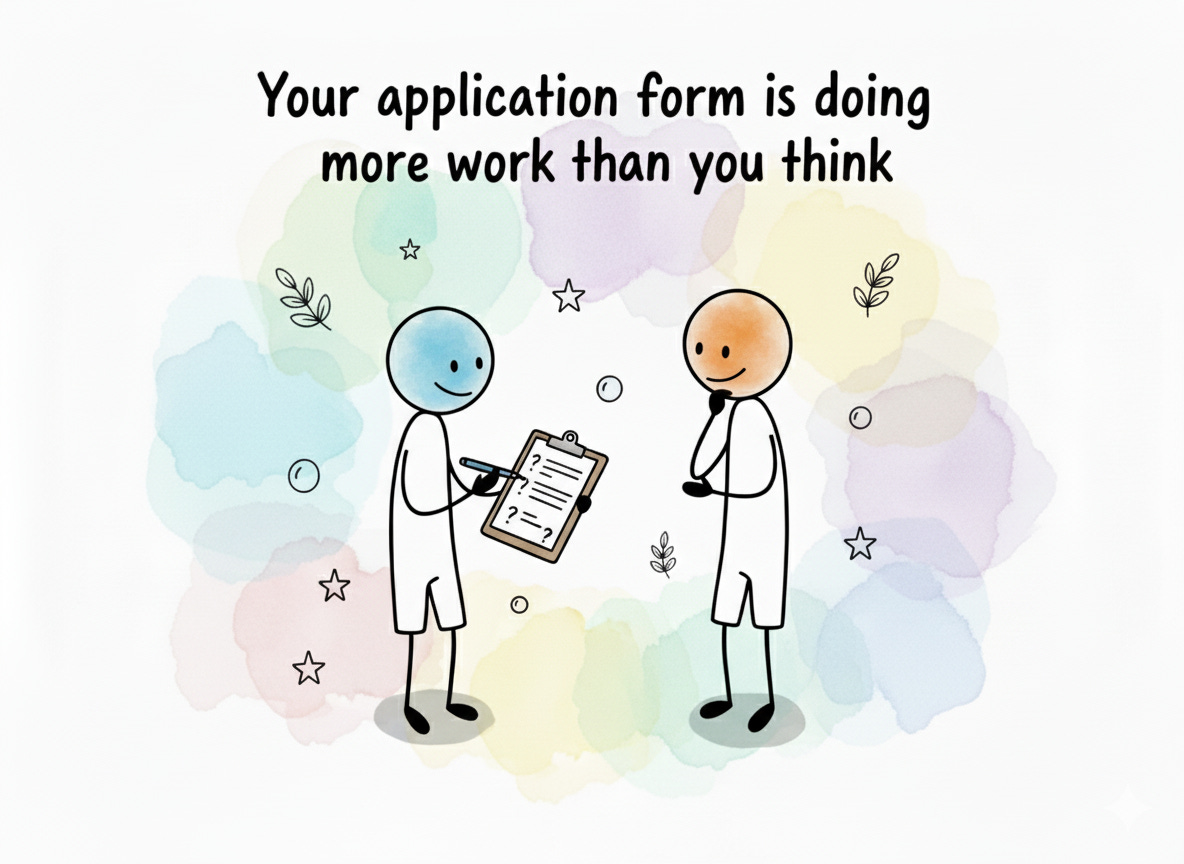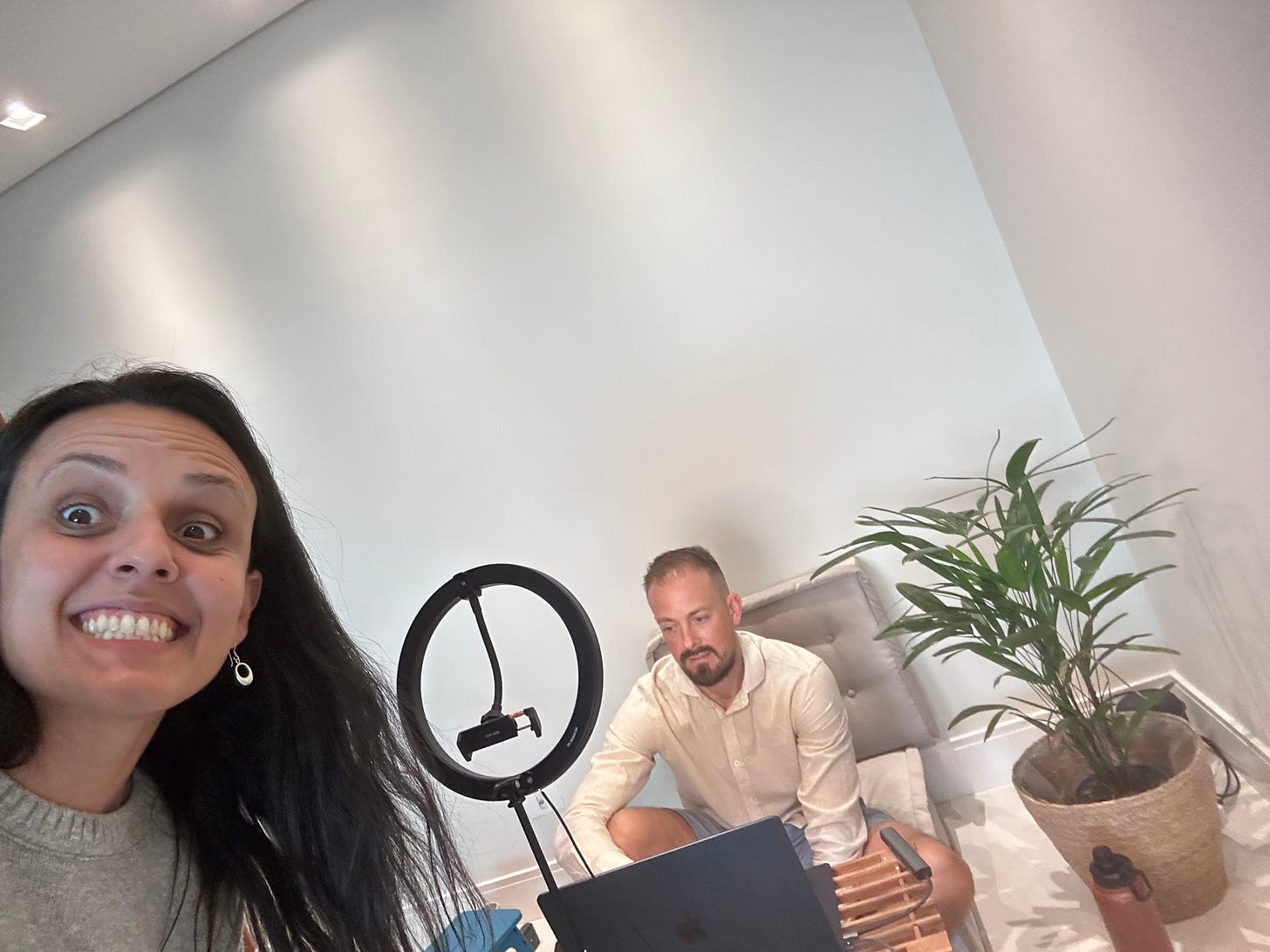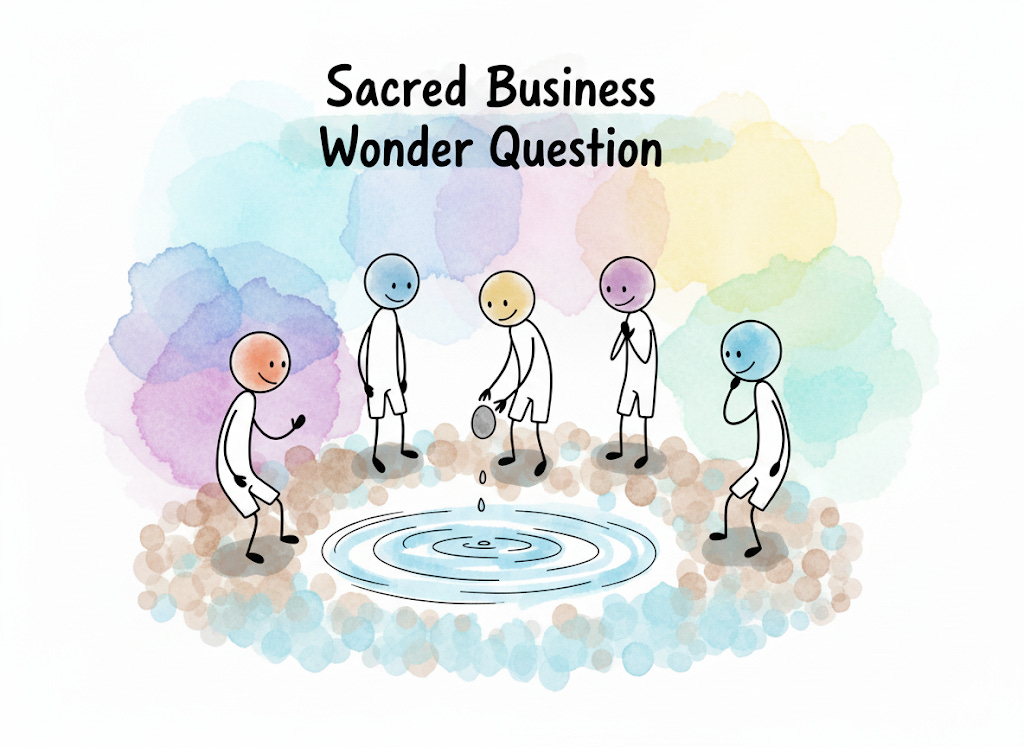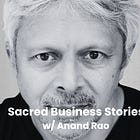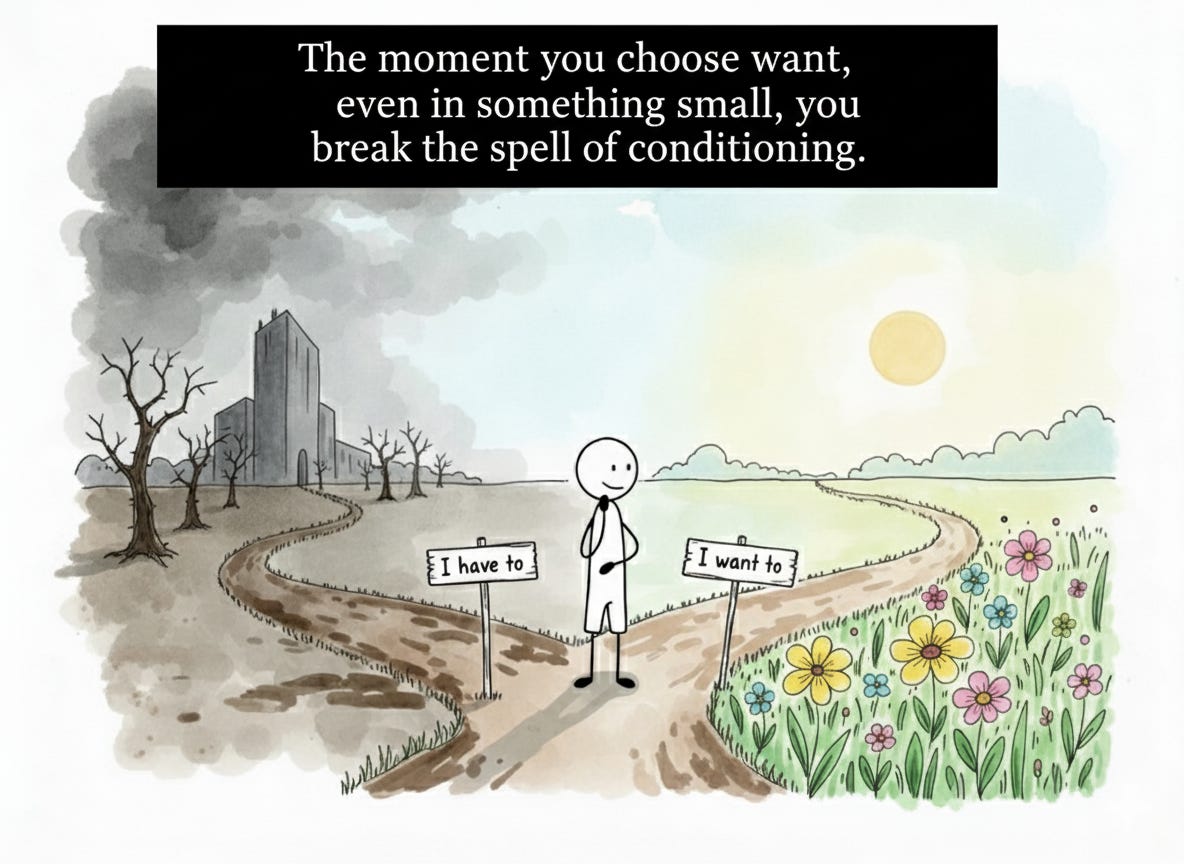103: Why Copying Other People's Applications Kills Your Sales
The strategic depth most people miss that turns prospects into paying clients
This topic came up on a coaching call in the Sacred Growth Club this past week.
"I just grabbed some questions from another coach's application," is something I’ve heard far too many times when someone is just getting started with booking consultation or sales calls. "Figured that's what you're supposed to do, right?"
If you’ve done this, you are not alone. Most people starting out don't give much thought to their application questions. They look at what others are doing and randomly pick questions because they think that's what they're supposed to do.
They don't realize there's actually a lot of depth and strategy that goes into crafting an application that gets results. And those results start with getting the call actually booked - but the application also becomes a major factor in whether that sales call converts.
People aren't thinking about this connection.
Your application form is doing more work than you think. Your application doesn't just qualify prospects - it starts the transformation process.
When someone fills out your form, they're not just providing information. They're beginning to see their situation differently. And that shift determines whether your sales call converts or becomes an hour of free therapy.
The Hidden Psychology of Questions
One simple framework for thinking about this is that every question you ask should service at least one of two purposes:
Purpose #1: Transformational Framing
You're coaching them toward a specific realization about their situation. The right questions help them recognize patterns they haven't seen before.
Purpose #2: Strategic Information
You're gathering details that help you run an effective call. This includes understanding their specific challenge, what they've tried, and how ready they are for change.
Most applications fail because they only focus on Purpose #2. They ask for basic information but miss the opportunity to create a deeper state of awareness.
Application Funnel Amplifiers
Back at my previous company, Empire Engineering, my partner Ry and I were obsessed with one question: Why did some applications produce sales calls that converted at 80%, while others barely hit 20%?
The answer wasn't in the prospects. It was in the architecture of the questions themselves.
We discovered that high-converting applications operated on three distinct psychological pillars - what we called the Application Funnel Amplifiers system. The framework transformed applications from information gathering into conversion catalysts.
The Transformation Before the Call
Here's what happens when someone encounters a well-crafted application question
"Based on your current relationship with alcohol, how do you think this affects your creative work?"
Notice what's happening here. You're not just asking about their drinking. You're helping them make a connection they might not have considered. Even if they answer "I don't think it affects my work," that tells you something important about their current awareness level.
Compare that to a generic question like "What is your current work situation?"
The first question creates insight. The second collects data that honestly might not even be that helpful in a conversation without more context.
Common Application Mistakes
Mistake #1: Wrong Length for Your Optimization Goal
This isn't about long vs. short - it's about understanding what you're optimizing for.
If you're optimizing for learning and more conversations, keep applications as friction-free as possible. Three to four questions max. You need volume to understand what works.
But if you're optimizing for qualification - meaning you have more demand than available call slots - you need to start adding questions that create strategic friction. This filters out window shoppers and people who aren't serious about moving forward.
This shows up as "too many questions" when you need more calls or "not enough questions" when you need better qualification. But it goes even deeper than that.
If you're trying to get as many conversations as possible, you don't want to challenge people too much in your questions. But if you're really trying to qualify, you might want to challenge or even provoke someone to gauge their level of commitment to transformation.
It's not about being right or wrong. If someone's not ready for that level of challenge, it's not the right time for a sales call. They'd be better served by your content, which should be designed to help people move along a path of awareness.
Back at Empire Engineering, Ry coined a phrase for this: "the moment of highest tension." That's when someone has enough awareness of their problem and enough belief in the possibility of change that they're ready to invest in transformation. Your application should identify whether prospects have reached that moment.
Mistake #2: Generic Questions
Often people use questions that could apply to anyone, anywhere. This immediately signals that you don't understand their specific world.
"What are your biggest challenges?" could be answered by a struggling entrepreneur, someone going through divorce, or a person trying to lose weight. It reveals nothing about your expertise in their particular situation.
Compare that to: "What patterns do you notice around your drinking that make creative work more difficult?" Now you're speaking directly to someone wrestling with alcohol and creativity. They immediately think, "This person is dialed in to my exact situation."
Here's what generic questions cost you. When someone reads a question that could apply to anyone, they assume your solution will be generic too. Why would they choose you over the dozens of other options asking the same broad questions?
But when your questions demonstrate intimate knowledge of their specific challenges, you become the obvious expert. You're not just another coach in the case of the example above - you're the coach who understands their particular struggle.
Generic questions also produce generic answers. "I struggle with time management and staying focused" tells you nothing useful for the sales call if you are supporting sobriety. But "I notice I drink more when I'm stuck on a project, then the next morning I can barely think clearly enough to work" gives you exactly what you need to create a breakthrough conversation.
The specificity works both ways. It attracts people who resonate deeply while repelling those who don't fit. Someone whose creative work isn't affected by drinking will immediately know this isn't for them. That's not a bug - it's a feature.
In the case of the sobriety coaching application we were reviewing on our last coaching call, the application asked "What is your creative profession?" as if it mattered whether someone was a writer, designer, or musician. But the real question was about the intersection of sobriety and creativity. The profession was just filler that diluted his positioning as the sobriety-creativity expert.
Mistake #3: Missing the Connection
Most applications ask about isolated symptoms without connecting them to the transformation the person actually wants.
Here's what I mean. The original application asked "How do you feel most stuck in your creative work?" as one question, then separately asked about alcohol use. But there was no bridge between them.
A better example when you connect the dots: "Based on what you shared about your relationship with alcohol, how do you think this is affecting your creative work?"
Now the prospect isn't just listing surface-level challenges like "I don't manage my time well." They're making the cause-and-effect connection for themselves. Maybe they've never considered how their drinking affects their morning clarity, or how hangovers impact their best creative work.
This is where the transformation starts. As they work through your questions, they should be developing a point of view and processing their situation in a new way. You want them thinking, "I never connected these dots before."
The questions should stack together and work as a system, not standalone information requests. Each answer should inform and deepen the next question, building toward the realization that they need the exact transformation you provide.
Mistake #4: No Framing Examples
When you ask broad questions without context, people don't know how to give you useful answers.
"What is your current relationship with alcohol?" could mean anything. Someone might write "It's fine" and think they've answered completely.
But if you provide framing examples - "For example, how long has this been going on? What triggers it? Has anything recent made it worse?" - suddenly they understand the depth of information you're looking for.
This does two things. First, it gets you better information to work with on the sales call. But more importantly, the examples themselves create awareness.
Carolina pointed out during the call that asking "How long has this been going on?" can be a wake-up call. Someone might realize "Wow it's been 15 years" and suddenly see their situation differently.
The framing examples aren't just helpful guidance - they're coaching prompts that create new perspectives. They help prospects see patterns they hadn't recognized and make connections they hadn't made before.
Beyond the Form: Integration Strategy
Smart marketers connect their application to their content strategy.
When you publish an essay about a specific challenge, end with a targeted call-to-action: "If this situation sounds familiar, I have 3 sessions available this week where we can brainstorm solutions together."
This works better than generic invitations because readers who resonated enough to finish the essay are already pre-qualified.
The Sales Psychology Secret
Here's what most many people don't think about: by the time someone fills out a thoughtful application, they're likely already 60%+ sold on working with you.
The questions demonstrate your expertise. The process shows you understand their world. The structure proves you have a methodology.
Your sales call isn't starting from zero. It's starting from a foundation of credibility you built through content, followed by strategic questions.
When Applications Don't Work
Applications fail in these situations:
Your audience doesn't know you well enough yet to invest time in questions
The application feels like homework instead of helpful reflection
Questions focus on fully on gathering information for you instead of creating insights for them
The form is too long for your current demand level
If people aren't completing your application, simplify it. If they complete it but don't show up for calls, its also possible your questions aren't supporting enough awareness (although there is a lot more we could dig into around this particular challenge).
The Complete Application Funnel Amplifiers System
Understanding these psychological principles is one thing. Implementing them systematically is another.
The complete Application Funnel Amplifiers framework includes the three psychological pillars, the exact question architecture we developed at Empire Engineering, and the "Transparency Alert" method that makes ideal prospects more excited while causing poor fits to self-select out.
This system is for Sacred Business Networkk members - anyone who wants to transform their sales process from convincing to magnetizing.
The framework includes:
The Million Dollar Test (the decision filter that changes everything)
Complete question templates for different business types
The Transparency Alert scripts that build magnetism
Psychology-based follow-up sequences
Conversion optimization strategies based on application completion data
If you're ready to stop running free therapy sessions disguised as sales calls and start attracting pre-qualified prospects who are excited to work with you, join Sacred Business Network this week and we will personally send you these special bonus resources.
Ready to transform your applications from paperwork to profit?
Happenings
Behind the Scenes: Why Bliss Beat Our Deadline
We've been having so much fun creating our new 9 Frequencies Workshop!
Last week, I had it in my head that we'd finish recording everything in one marathon session - "even if it takes 6-8 hours, we're getting this done today."
The reality: we only got a third of the way through, and I could feel myself starting to push. Then I connected back to what Carolina shared in our embodiment session about bliss not being tied to achievement - it's both presence and possibility.
I realized: this excitement we're feeling about how clear our message has become after almost two years of refining it? If we end up having to do three recording sessions instead of one, I get to feel this joy three more times!
We celebrated not because we finished, but because we experienced such clarity about what we're looking forward to sharing with you.
As our thank-you to last month's Substack auction participants, if thats you, you are getting exclusive first (and free) access to this 90-minute workshop before anyone else that will help you dive deeper into unpacking your harmony map results.
Can’t wait to share it!
Why We Ditched Our Mastermind for Wonder Questions
Sometimes you have to stop what's not working to discover new possibilities. Our monthly Substack masterminds were feeling a little flat, and also not super connected to what we most feel called to share, so we killed the format entirely and tried something different: Wonder Questions - living inquiries that open you into mystery instead of trying to figure things out.
Our first call centered on this passage: "Communication is creation. Every aspect of your life - including your business - is a symbol of what you're choosing to convey throughout Creation." The wonder question: If my business is a living communication, what is it currently saying, and what do I most long for it to convey?
Our network members showed up with such authentic presence and it was awesome!
We're continuing with this format monthly for all Sacred Business Network members as we head into October. Join the Sacred Business Network to experience these Wonder Questions calls.
Here is what I want to share this week …
Why One Email to 25 People Beat Perfect Planning
In our latest episode of Sacred Business Stories with Anand Rao , we talked about everything from why our brains operate on patterns rather than amounts (hello, one-minute meditation habit) to his question about human superintelligence in the age of AI. Most importantly, we explored our shared belief that your work building your business IS your spiritual evolution.
No separation between inner growth and outer success - they're the same path. Watch Episode 23 to hear how starting small and working with your resistance can create surprisingly elegant change.
This Week’s Essays
P.S. You can read all previous editions of the newsletter here, and you can upgrade your subscription here.
What’s next?
Phil and I are ready to support you in creating a business that aligns with your heart's calling. Here's how we can help:
Click to Find Your Hidden Business Pattern (Free): The Harmony Map Assessment reveals which inner pattern is blocking your next level - and why strategy alone hasn't fixed it. For entrepreneurs ready to address both the inner patterns AND outer strategies for breakthrough results.
Read the Sacred Business Manifesto (Free): Learn the core principles of building a Sacred Business through our founding story and framework. See how we transformed our approach to business by understanding that everything is connected.



